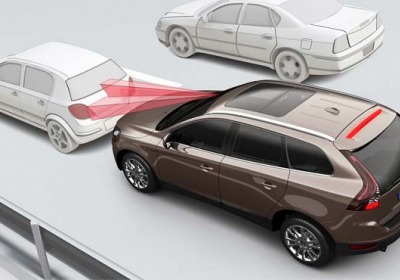‘Crash avoidance’ systems rated for safety
Thu, 10 Oct 2013The European car safety body Euro NCAP has confirmed it is currently testing a number of cars fitted with crash avoidance technology in an effort to judge the systems’ effectiveness.
This news coincides with an announcement from the American Insurance Institute for Highway Safety (IIHS), which has published the first results of its own version of the scheme. Euro NCAP and IIHS are cooperating to establish a standardised test formula.
On Bing: see pictures of autonomous braking
On Bing: see pictures of Euro NCAP crash testing
The systems in question aim to help drivers avoid ‘front-to-rear’ accidents, where their vehicle is accidentally driven into the back of the one ahead.
Such systems are increasingly fitted to new cars, including everything from tiny city cars like the Volkswagen Up! to prestige luxury vehicles like the latest Mercedes-Benz S-Class.
As the IIHS explains, however, they fall into three categories:
> systems that provide a collision warning only
> systems that provide a collision warning and then apply the brakes in an effort to mitigate – but not avoid – the impact
> systems that provide a warning and then ultimately attempt to try and stop the car completely before impact, should the driver take no action
Euro NCAP refers to them as Forward Collision Warning and Autonomous Emergency Braking systems. Plain and simple autonomous braking and autobrake are other familiar terms.
The plan is to make the differences between them clearer to buyers, enabling the public to make a more informed choice about which systems are worth the extra expense. The intention is to also encourage carmakers to speed up fitting such devices as standard.
While it’s unclear exactly how the Euro NCAP test procedure will be assessed at this stage, the IIHS has adopted a rating format of superior, advanced and basic, and runs tests at 12mph and 25mph. Some systems are only effective in the lower speed range.
Superior vehicles have to either autobrake to avoid the crash altogether or show a significant speed reduction at the point of impact. Advanced systems must slow the car by at least 5mph.
For basic all that’s needed is a forward collision warning that meets the American National Highway Traffic Safety Administration’s existing performance criteria – which involves issuing a timely alert during five out of seven trial procedures.
Seven cars were issued with advanced ratings in the IIHS’ initial round of testing, which focused on “moderately priced and luxury midsize cars and SUVs”.
They are the Cadillac ATS, Cadillac SRX, Mercedes-Benz C-Class, Subaru Legacy, Subaru Outback, Volvo S60 and Volvo XC60.
Euro NCAP will issue the first results from its crash avoidance testing on 29 October 2013.
Find out how much a used Volvo costs on Auto Trader
Quoros 3 first Chinese five-star safety car
Volvo V40 sets new Euro NCAP safety record
Euro NCAP’s safest cars in each category (2012)
By motoringresearch.com

